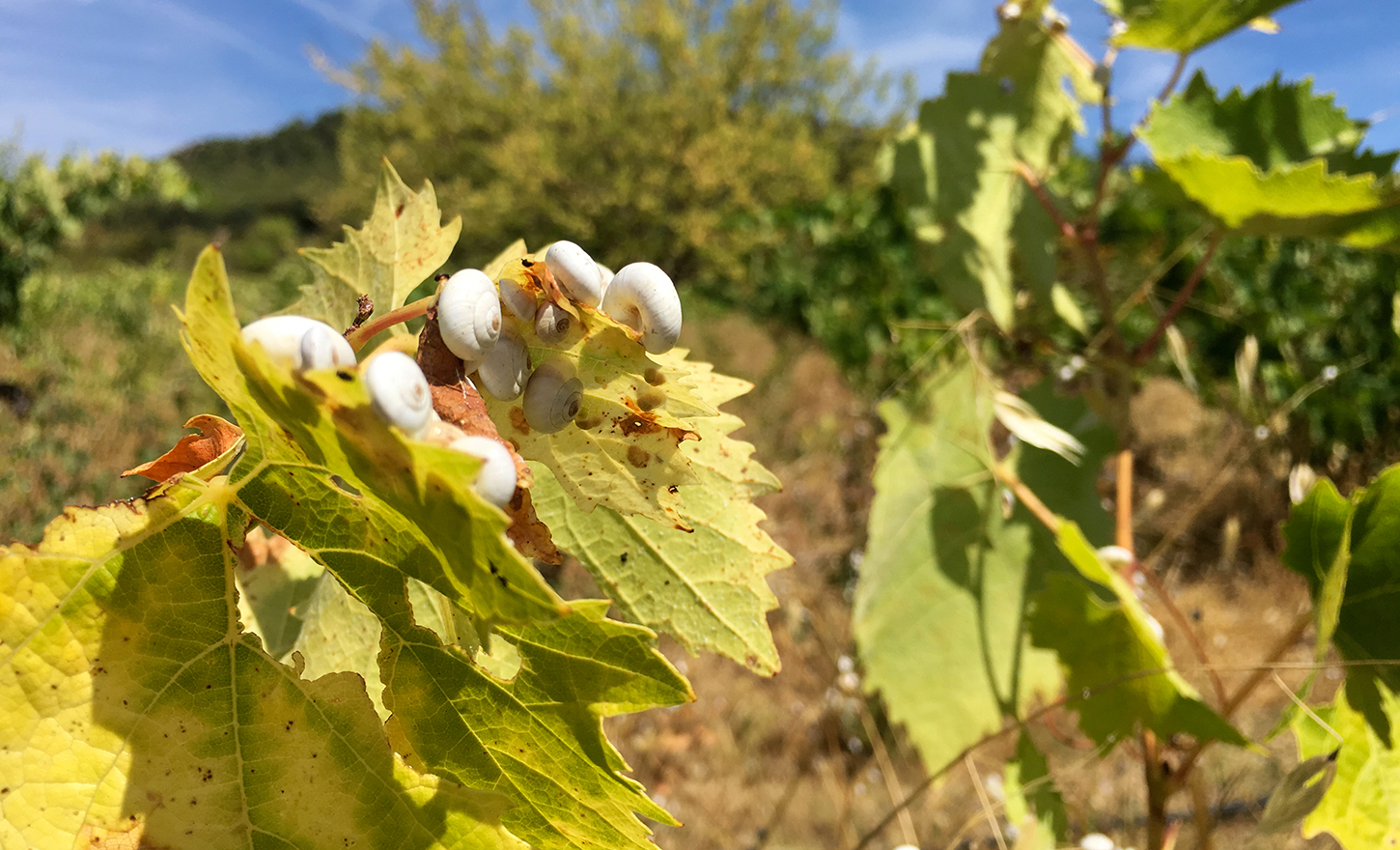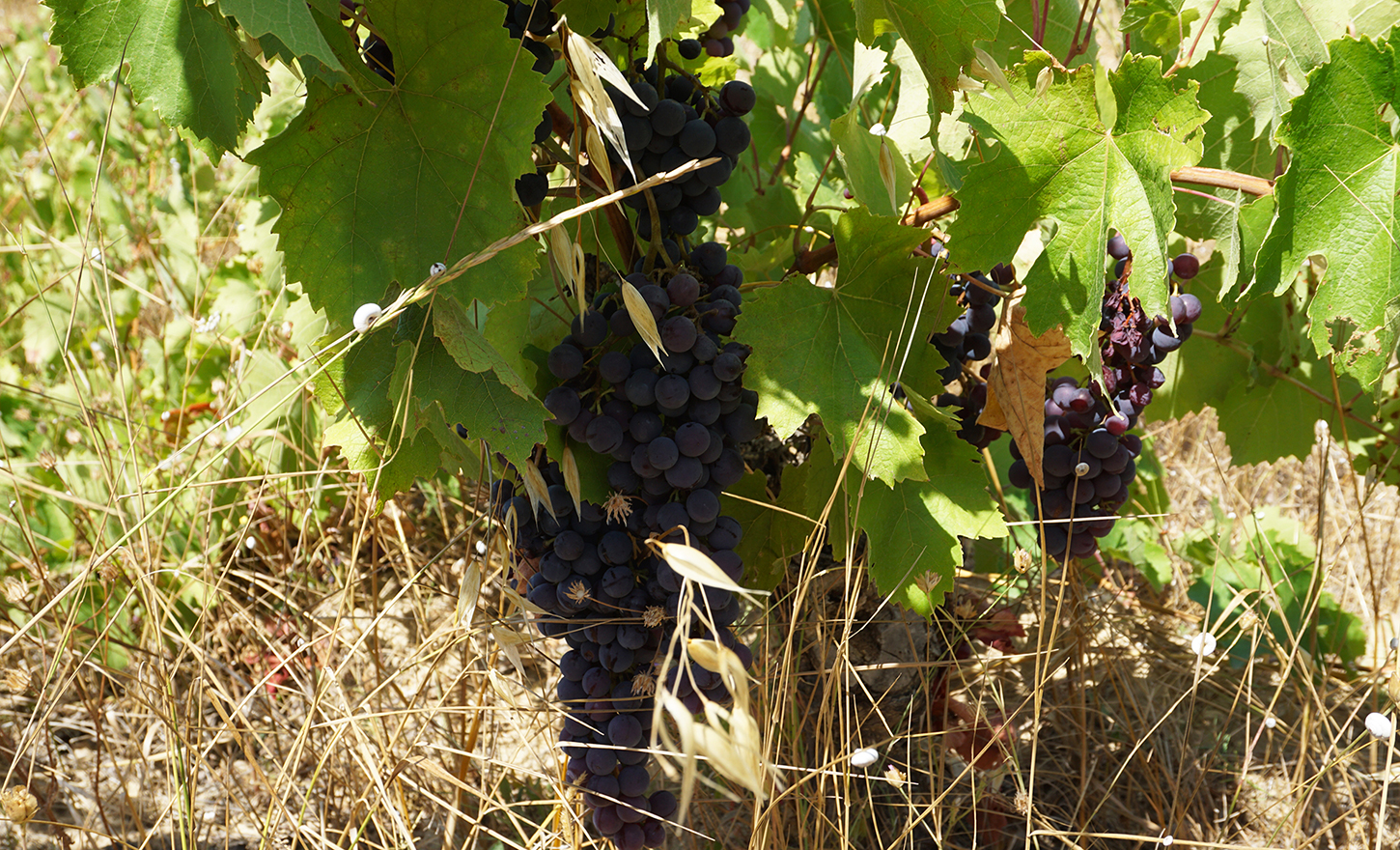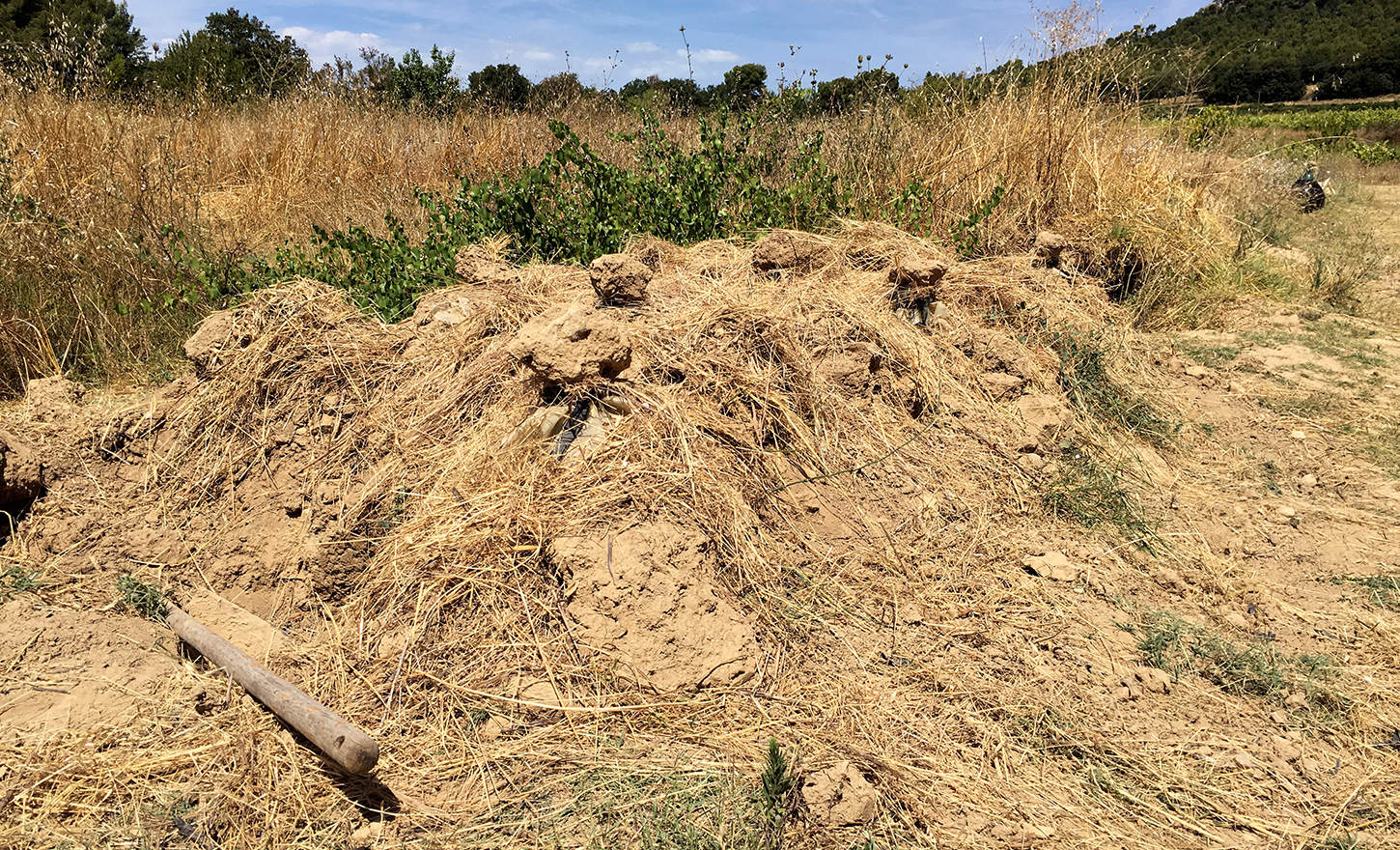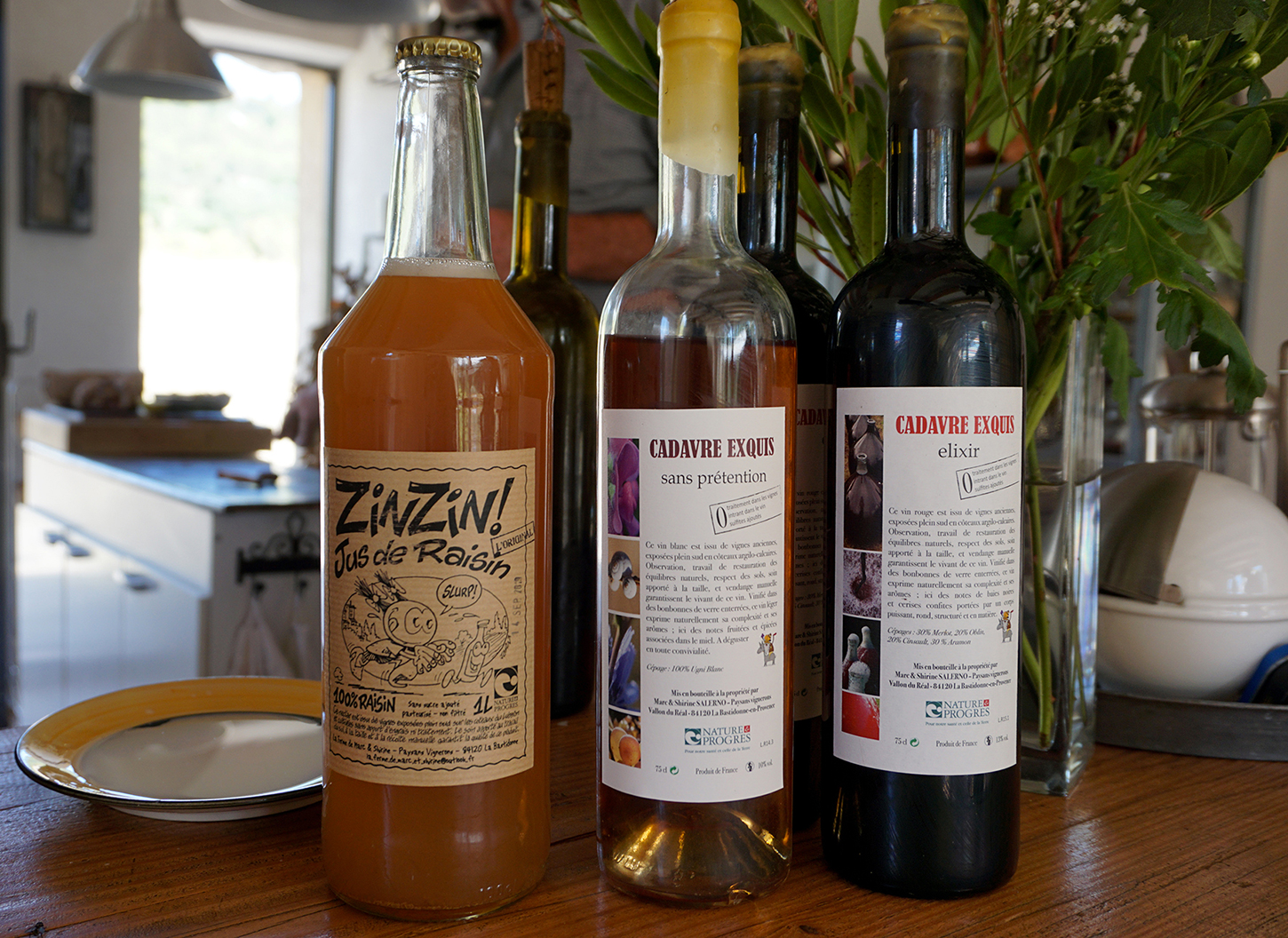This article originally appeared on MUNCHIES Italy.
I’m in Provence, in the south of France, in Luberon: A hilly area not far from the town of Pertuis, and I’m looking for two winemakers who I’ve heard make wine without a cellar. I’m certain that I’ve arrived when I pass by a vineyard that looks nothing like the ones we’re accustomed to in Italy. It doesn’t have rows, for example—it’s more like an area of wild vegetation with grape vines here and there. Spoiler alert: That’s exactly what it is.
Videos by VICE

And then there are the snails: Myriad minuscule white snails that cling to blades of grass, to the plants, to anything they can. They’re a kind of living blanket that envelops the vegetation, and it’s almost like they’ve just resurfaced from an alternative dimension. And we haven’t even had anything to drink yet.

Marc and Shirine Salerno come to meet me smiling, together with their dog (he, too, is decorated with snails). Shirine is energetic and naturally talkative; Marc is quiet, his words calm and measured, and seems to accept but not fully understand my curiosity towards a winemaking method that he’s been practicing for almost 30 years.

At one point Marc and Shirine show me the cellar, and here it is: A large pile of earth, covered with straw. The wine is literally buried here and exhumed when it comes time to bottle it.
They decided to call their farm Cadavre Exquis, which literally means “exquisite cadaver,” a reference to a Surrealist game in which everyone writes a word without knowing what the others are writing, and they compose random sentences with whatever comes out. The game takes its name from the first sentence ever created by its inventors, André Breton and his companions: Le cadavre exquis boira le vin nouveau, or “the exquisite cadaver will drink the new wine.”
“It’s a game that shows how variation might produce poetic effects,” Shirine explains. And variation has a central role in their work: Their wine-growing area is a sort of edible forest, where in four hectares different varieties of wine grapes (Ugni blanc, Aramon, Carignan, Cinsault, Oblun, Merlot), many wild plants, and 400 fruit trees—ranging from fig, almond, pomegranate, and olive; all planted since Marc came here—coexist in harmony.

When we enter the vineyard, the thin vines are between 70 to 100 years old. “Our method consists of creating a balance in the ecosystem of the vineyard, without the use of pesticides.” No pesticide in 17 years, not even copper and sulfur, they insist several times. “Even the animals—donkeys, horses, bees—have a role in maintaining that balance. And the great biodiversity keeps the plants healthy, combined with the fact that we don’t push them to produce. We take only what they give.”
This goes far beyond organic farming, in an approach that is between permaculture and what Shirine defines as “wild farming”: “We follow a notion of ‘do-nothing farming’ as it was developed by [Masanobu] Fukuoka, but to be honest, we only read Fukuoka recently. Marc had already been working this way for decades.”
It’s mid-August and the grapes are almost ripe, especially with the warm weather we’ve had this year. “The harvesting is all done by hand, going through the vines with a bottle mounted on a wheel, and putting the grapes inside of it, at the very moment of harvest.” From the barrel, the mash is moved directly into the bonbonnes, glass jars that remain for several months in the open, where the fermentation occurs, and which will be placed underground come spring.
And at a certain point, Marc and Shirine show me the cellar, and here it is: A great pile of earth covered in straw, with the necks of the bonbonnes sticking out here and there.

The wine is literally buried here and exhumed when the time comes to bottle it. The Salernos use only a shovel and their own strength to dig a hole large enough to contain the 70 jars, which translates into a small production of 30-35 hectoliters. There’s no decanting, no filtration, or anything like that.
I do a quick mental recap of everything that could go wrong with producing wine in this way and find that I’m actually looking forward to trying it. Much of what a sommelier considers “wrong” about wine are points of interest for me, but here we are, prepared to drink something that is really outside of the canon of my personal taste (even the latter is pretty elastic).
“For me, this is not making natural wine—it’s making wine, tout simplement.”
While they pour me a taste, the Salernos offer more details about their lives. Marc has been a farmer since 1972, when he was 18 years old. He’s a pioneer of organic wines: He had been working with such methods while they were still being applied in an informal manner. He started making wine in the early 90s, first for his own consumption and then, starting in 2011, for sale, thanks to help from Shirine.

Marc has a simple explanation for how he got started: “Thirty years ago, I was conversing with a man near the boarding house, who told me that he made wine with glass jars he kept underground—that it was a good wine, that it didn’t give you a headache, and that unfortunately he wasn’t able to make it anymore. So I decided to start making it myself, in the same way.”
While impossible to verify, it’s a story that aligns with the simplicity of Marc’s method: Something born intuitively and pursued as if there weren’t any alternatives. He doesn’t embellish anything, he doesn’t act holier than thou, even if the surrealist reference might project an affectation that isn’t there. From what I can tell, he wasn’t fully aware of the natural revolution happening within the wine world. “For me, this is not making natural wine—it’s making wine, tout simplement.“
While I’m drinking and befriending the cat, they seal the bottles with beeswax from their own bees, then paste on the label with milk.

The notions of cru and terroir, which created the commercial fortune of French wines, aren’t present here. The grapes are mixed and the wine is bottled and sold according to sustainability needs. “We do some local markets and one fair per year, but demand is growing. The ideal is to keep it underground for three years, but right now we’re bottling it after hardly one year.”

Faced with a process of production that is so basic and left to chance—even compared to that of other natural wines—you might expect a mildly crude and modest wine. And instead, Cadavre Exquis has a clean, fine taste, without any stink or defects. I tasted it in the house that they built themselves (would you expect anything less?) in rocks and reclaimed materials.

While I’m drinking and befriending their cat, they seal the bottles with beeswax from their own bees, and then paste on the label with milk. It’s clear that the Salernos live in a bucolic, minimalist paradise, and I already feel the white snails creeping into my hair.

I tasted the red wine again in Milan, with a sommelier friend and a distributor of natural wines, both of whom have more educated palates than mine. In a blind test, they both described it as a balanced, elegant, and very good wine. That’s how I told them about the two winemakers from Provence, who have about 70 glass jars and a shovel for digging instead of a cellar; who illustrated how wine can be made with minimal means and maximum exposure to nature’s spontaneity. In the end, the results you get are surprising, almost like the sentences from a surrealist game.
WATCH: Open a Wine Bottle with a Shoe




